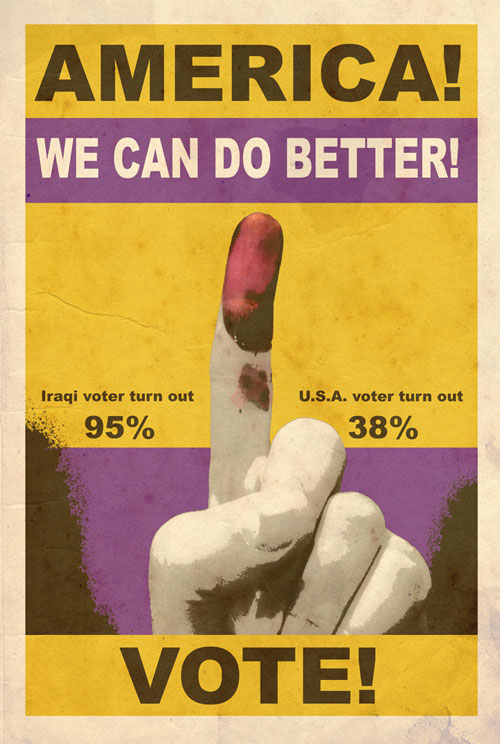Yesterday as part of Obama’s campaign sweep on the taxpayer dime he announced his new student loan plan…
Excerpt:
It is also a part of the plan that monthly payments be capped at a level of 10 percent of the money that left over when all taxes are paid and basic necessities taken care of. This cap has been at 15 percent, which takes a lot more money out of the pockets of citizens and out of the economy.
Understanding Obama Student Loan Forgiveness
President Barack Obama will undoubtedly be remembered for his healthcare reform legislation that was recently passed by Congress. However, there is another program that is much less well known that could affect far more people directly. This is the Obama student loan forgiveness program.
Under the terms of this program, anyone who makes his monthly payments for twenty years after leaving college is eligible to have his/her remaining balance forgiven. At least, this applies to anyone with Federal Direct loans, Stafford loans, and Perkins loans. Those who take out their loans from private lenders such as Sallie Mae are still responsible for repaying their loans in total.
Individuals who spend ten years in public service positions become eligible to have their loans forgiven at that point rather than having to wait the full twenty years. This means that their debt is forgiven in half the time and their debt reduced significantly sooner.
It is also a part of the plan that monthly payments be capped at a level of 10 percent of the money that left over when all taxes are paid and basic necessities taken care of. This cap has been at 15 percent, which takes a lot more money out of the pockets of citizens and out of the economy.
There are also programs in place that allow teachers to work for just five years in elementary or high schools that have been designated as low income schools by the Dept. Of Education. This applies to FFEL loans and to Direct loans.
Military personnel are also able to achieve forgiveness for their student loans if they have a degree. This program works for members of all five branches of service, including the Coast Guard and Reserves.
A final option is to apply for income based repayment terms. While it is probably best to sign up for this early in the life of the loan, older loans may still qualify for this lower payment plan. Of course, the clock starts all over when one signs up for this option. That means that someone who has worked in public service for eight years and signs up for income based repayment must work another ten years in public service instead of the two he/she would have had left.
Student loans are a fact of life for the vast majority of college graduates. This is especially true of those who go beyond a bachelor's degree and take graduate level classes. Sadly, the much higher pay they were promised if they pursued their education to its fullest has not materialized. The economic recession has made this fact even worse for most.
The Obama student loan forgiveness program is intended to help ensure that individuals do not wind up broke because they chose to continue their education. While nobody will see his/her loan just disappear overnight, payments have been lowered and the time shortened that one must pay before the remaining balance is forgiven. Public service workers and teachers are eligible for forgiveness at much faster rates due to the nature of their jobs.
Achieving Student Loan Forgiveness Through One’s Career
For those who wish to get their college degree but are not as financially stable to do so, student loans are definitely a great thing to have. However, the large interest rates of such as well as the length of time it takes to pay for them can make them a financial burden in the long run. This has been the trend until student loan forgiveness programs were introduced.
Some people might not know this fact, but it is actually possible to get a student loan forgiven. An effective way to do so is by getting a job that entitles one to avail of the opportunity to get the loans lessened up to a certain degree.
Here are some of the occupations one can take up and expect the possibility of loan forgiveness.
1. Volunteers - Some of the organizations in the community today can offer a student loan forgiveness opportunity for their volunteers. This is available in exchange for a specified length of time in service.
2. Military personnel - Aside from being able to serve the country, a military man also gets to avail of student loan repayment. However, this is limited to the Army and Air Force as well as their corresponding national guards. The Navy also offers this for its members.
3. Doctor or lawyer - Certified practitioners in both the legal and medical fields can choose from a variety of options to get their student loans forgiven as well. Since it takes up to a six-figure amount for them to finish their degree and be able to practice fully, forgiveness loans are definitely a blessing for them.
4. Teacher - Teaching is a profession greatly honored by the government considering how valuable education is. Because of this, complete loan forgiveness is also offered for those who teach in public elementary, middle and high schools.
Student loans that are set on an income-based repayment plan can take up a maximum of 25 years. This seems like a long time. However, someone who pays dutifully every month without missing a beat might be able to lessen the entire term of the loan.
Knowing all these, a student can take time to assess what college degree to take up and career to build. Of course, it is still very important to take note of what one really enjoys doing, but the financial part of the process is also something to think about in order to reach the ultimate state of financial stability.
White House officials said Obama will provide student loan relief in two ways:
First, he will accelerate a measure approved by Congress that reduces the maximum required payment on future student loans from 15 percent of discretionary income annually to 10 percent. The White House wants it to go into effect in 2012, instead of 2014. In addition, the White House says remaining debt would be forgiven after 20 years, instead of 25.
About 1.6 million borrowers could be affected.
Second, he will allow borrowers who have a current loan from the Federal Family Education Loan Program and a direct loan from the government to consolidate them into one loan. The consolidated loan would carry an interest rate of up to a half percentage point less than before. This could affect 5.8 million more borrowers.
Washington Posts Wonkblog: There is a Bush-Era Backstory on Obama’s ‘New’ Student Debt Proposal
The student debt relief proposal President Obama rolled out this morning isn’t exactly new. As I mentioned earlier today, it’s more of an adaptation: It lowers some existing caps on how much student borrowers have to pay back on their loans each year. Those caps are pegged to income, hence the name for the policy: Income-based repayment. Or, in education policy terms, IBR.
The Obama administration didn’t create IBR; instead, it inherited the policy from its predecessor. President George W. Bush signed the College Cost Reduction and Access Act in September 2007. The law allowed, among other things, for student borrowers to cap loan payments at 15 percent of income and for loan forgiveness after 25 years of payments. All those changes came into effect in July 2009.
Today’s proposal uses the same structure, but moves the goalposts: the cap for loan repayments gets dropped to 10 percent of income and loan forgiveness gets moved up to after 20 years of payments.
The nonprofit Project on Student Debt for years now has been an IBR advocate. It drafted much of the policy proposal that Bush signed in 2007 and that the Obama administration has now strengthened. I spoke this afternoon with the Project on Student Debt’s president, Lauren Asher, about the history of income-based repayment, what these new changes mean and why the new publicity push matters for student borrows. What follows is a transcript lightly edited for content and length:
Sarah Kliff: Tell me about the history of income-based loan repayment. How did the proposal come to be law?
Lauren Asher: We’ve been working on these issues since 2005. The idea of income-based repayment evolved out of an analysis we did, that looked at payment options for student loans. Students were really getting mixed messages from borrowers: Sometimes you’re encouraged to borrow because it’s a good investment; but on the other hand you’re warned not to borrow too much.
We came up with this proposal, which was a sliding scale that took into consideration how much the borrower is earning. We originally thought of it as regulatory, but then legislators got involved. Our original recommendation said that the loan forgiveness should be at 20 years.
SK: But it got set at 25 years. How did that happen?
LA: The way the law got written, the education secretary had the authority to set it up to 25 years, so that’s where it’s currently set.
SK: What does today’s announcement mean for the program? How much more expansive does it get?
LA: One of the most important things about this announcement is the administration is committing to help more borrowers find out about IBR. There’s an estimated half million enrolled right now, and millions more could benefit from the program.
There really needs to be more public outreach and education. So we’re really thrilled that the department is going to do that. If you talk to people at the Occupy Wall Street protests, or in your everyday life, you find they owe more than they ever have before.
SK: That’s interesting that you mention the publicity around the program as the key change here. How much do you think it matters that the administration is also lowering the caps for loan payments in the IBR program?
LA: We’re especially excited about the commitment to raise awareness about IBR. In a previous life I’ve worked on other policy issues. And when something is a new policy, it can take awhile to penetrate public consciousness. With student debt, there’s no time to waste.
That being said, the changes to payment will make the program even more affordable for current students. IBR is a light at the end of the tunnel, and the tunnel will be shorter and brighter with these changes.
Side Note from Tea Party Nation:
The Occupy movement has many goals. Many of them inconsistent with each other, but that is what happens when you smoke too much marijuana.
One thing mentioned by almost every one of the group is the demand that student loans be forgiven.
Let’s assume for a moment that could be done. What would it mean? While consistency is not one of the strong points of the Occupy movement, this would be the ultimate form of corporate welfare.
From the Frum Forum:
All colleges are corporate entities. (Harvard University is actually the oldest corporation in the United States.) Unlike most other entities treated as charities or considered government agencies, they derive most of their revenue from the sale of services–education and research–to paying customers. Only a handful of institutions, maybe 400 of the country’s 4,000 or so colleges and universities, have endowments large enough that they don’t have to watch the “bottom line” for every single project they undertake. Even some colleges with big endowments–Johns Hopkins comes to mind–are fixated on growing revenue and surplus (profit). Explicitly for-profit colleges are just a little more honest about their status as businesses.
If all student loans were to be forgiven, they would almost certainly have to be forgiven for those currently enrolled. Forgiveness, furthermore, would create a precedent that tuition for all colleges would be essentially free going forward. This would amount to an open-ended subsidy that would benefit many of America’s largest corporations (the universities themselves) forever.
Tuition costs would almost certainly rise significantly in any case as the individuals consuming education services (few of whom pay “sticker price” right now) would have no reason to even look at the costs assessed.
Interestingly a Rassmussen poll finds that 66% of Americans oppose student loan forgiveness.
To forgive the estimated $1 trillion in student loans would mean the government would have to give banks $1 trillion dollars to cover that loss.
Where would that money come from? The taxpayers, of course. We have a national debt set to hit $16 trillion soon. What are we going to do, borrow another trillion from China?
Forgiving the student loans also sends several terrible messages. First it teaches people that fiscal discipline does not matter. The student who borrowed $100,000 to land a $20,000 social work job and who spent half that money partying and going on spring break to Cancun, is treated the same as the engineering student who worked his way through school with no student loans and sacrificed to get his or her education.
The fiscal cost alone should sink this really bad idea. What make much more sense, as I have indicated in previous blogs on Tea Party Nation is to change the bankruptcy code and make student loans dischargeable under Chapter 13 bankruptcy. The obligor would still have to pay for a number of years and would pay some of the loan back so the taxpayer is not on the hook for the entire loan amount. This is not a perfect solution but it would allow the person who owes student loans the opportunity to begin moving forward without the crushing debt load on their backs. It would also mean they pay for part of the debt they incurred.
The size of student loan debt forgiveness will probably kill the idea. But look for Obama and the Party of Treason to suggest it as part of a desperate reelection bid.
Ask Marion~




















No comments:
Post a Comment